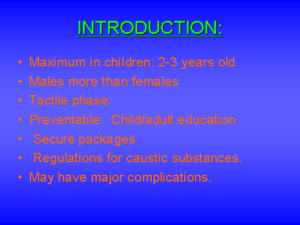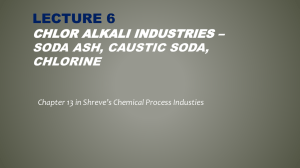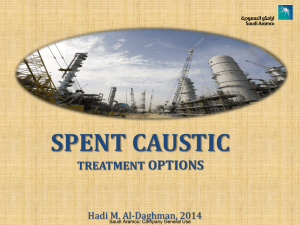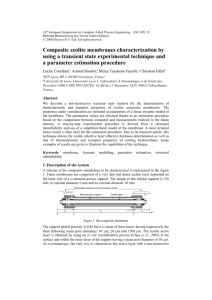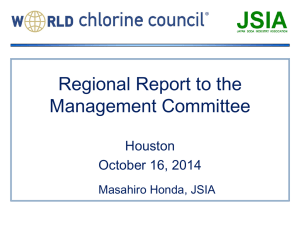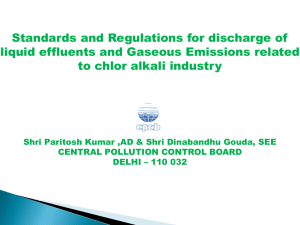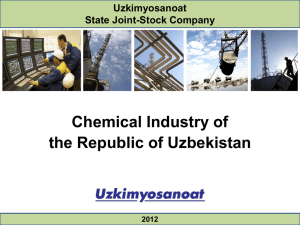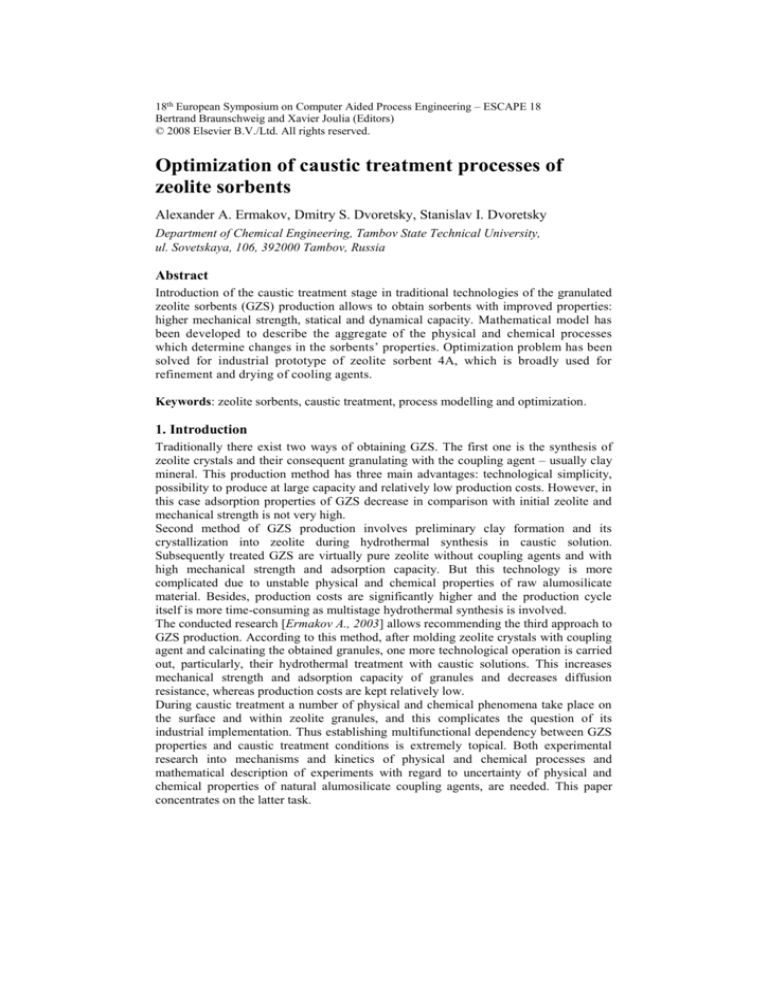
18th European Symposium on Computer Aided Process Engineering – ESCAPE 18
Bertrand Braunschweig and Xavier Joulia (Editors)
© 2008 Elsevier B.V./Ltd. All rights reserved.
Optimization of caustic treatment processes of
zeolite sorbents
Alexander A. Ermakov, Dmitry S. Dvoretsky, Stanislav I. Dvoretsky
Department of Chemical Engineering, Tambov State Technical University,
ul. Sovetskaya, 106, 392000 Tambov, Russia
Abstract
Introduction of the caustic treatment stage in traditional technologies of the granulated
zeolite sorbents (GZS) production allows to obtain sorbents with improved properties:
higher mechanical strength, statical and dynamical capacity. Mathematical model has
been developed to describe the aggregate of the physical and chemical processes
which determine changes in the sorbents’ properties. Optimization problem has been
solved for industrial prototype of zeolite sorbent 4A, which is broadly used for
refinement and drying of cooling agents.
Keywords: zeolite sorbents, caustic treatment, process modelling and optimization.
1. Introduction
Traditionally there exist two ways of obtaining GZS. The first one is the synthesis of
zeolite crystals and their consequent granulating with the coupling agent – usually clay
mineral. This production method has three main advantages: technological simplicity,
possibility to produce at large capacity and relatively low production costs. However, in
this case adsorption properties of GZS decrease in comparison with initial zeolite and
mechanical strength is not very high.
Second method of GZS production involves preliminary clay formation and its
crystallization into zeolite during hydrothermal synthesis in caustic solution.
Subsequently treated GZS are virtually pure zeolite without coupling agents and with
high mechanical strength and adsorption capacity. But this technology is more
complicated due to unstable physical and chemical properties of raw alumosilicate
material. Besides, production costs are significantly higher and the production cycle
itself is more time-consuming as multistage hydrothermal synthesis is involved.
The conducted research [Ermakov A., 2003] allows recommending the third approach to
GZS production. According to this method, after molding zeolite crystals with coupling
agent and calcinating the obtained granules, one more technological operation is carried
out, particularly, their hydrothermal treatment with caustic solutions. This increases
mechanical strength and adsorption capacity of granules and decreases diffusion
resistance, whereas production costs are kept relatively low.
During caustic treatment a number of physical and chemical phenomena take place on
the surface and within zeolite granules, and this complicates the question of its
industrial implementation. Thus establishing multifunctional dependency between GZS
properties and caustic treatment conditions is extremely topical. Both experimental
research into mechanisms and kinetics of physical and chemical processes and
mathematical description of experiments with regard to uncertainty of physical and
chemical properties of natural alumosilicate coupling agents, are needed. This paper
concentrates on the latter task.
2
A. Ermakov et al.
2. Mechanisms of caustic treatment process
Modification of physical and chemical properties of GZS during caustic treatment is
caused by the following processes:
- source components of GZS, coupling agents (claying mineral) and adsorbent
(synthetic zeolite) in the interaction with caustic solution are partially dissolved with the
emergence of elementary silicate and aluminate ions;
- as a result of polycondensation between hydrated silicate and aluminate ions,
alumosilicate ions and colloid structures of amorphous alumosilicate are formed;
- due to the continuous dissolution of the alumosilicate structures, crystallization centers
are formed and zeolite crystals grow in situ.
Generalized diagram of these processes is presented in Figure 1.
At the initial stage of caustic treatment the caustic solution diffuses into zeolite sorbent
granules and clay coupling agent partially dissolves giving birth to elementary
aluminate and silicate ions. Original zeolite crystallite has greater chemical resistance to
dissolution in caustic; that is why during zeolite crystallite and caustic interaction only
small part of silicate and aluminate ions is dissolved and there are no significant phase
changes in zeolite structure. With accumulation of elementary aluminate and silicate
ions in caustic solution a new process takes place: synthesis of alumosilicate gel, which
properties drastically contrast the initial clay coupling agent. In general terms, this gel is
formed during polycondensation of elementary and compound silicate and aluminate
ions. The forming gel represents metastable phase and repeatedly dissolves in caustic
solution to form compound alumosilicate ions, the nuclei of crystallization and zeolite
phase.
Aggregate of the described physical and chemical processes causes changes in
adsorption and mechanical properties of GZS. Re-crystallization of clay coupling agent
into zeolite phase gives 25% increase of adsorption capacity. During GZS caustic
treatment, adsorbate diffusion also increases up to 70% due to changes of secondary
porous structure and formation of pores. In quantitative terms, increase in secondary
pores volume fluctuates widely (3 to 150%) and largely depends on the concentration of
caustic agent and duration of treatment. Increment of GZS mechanical strength up to
200% is related to the formation of amorphous alumosilicate and claying properties of
particles of the emerging gel structure.
3. Mathematical model of caustic treatment process
Based on the mechanisms of physical and chemical processes described above,
mathematical model of GZS caustic treatment includes the system of partial differential
equations (1)-(5) of controlled diffusion reactions (CDR) and balance equations of
liquid and solid phases.
Mathematical description of GZS caustic treatment process has been formulated taking
into account the following assumptions: 1) the process of single particle caustic
treatment of GZS and process in the unit reactor behave the same; 2) the process runs in
isothermal conditions; 3) the particle has a canonic shape (cylinder, sphere); 4) there is
no gradient of concentrations in the liquid phase; 5) the particle is isotropic from the
diffusion standpoint.
Optimization of caustic treatment processes of zeolite’s sorbents
Clay
Caustic solution
Me , OH
Me 2 O Al 2 O3 xSiO2
3
Zeolite (4A)
Na 2 O Al 2 O 3 2SiO 2
n
Dissolution
HO y Si (O Me ) 4 y
Dissolution
HO y Si (O Me ) 4 y
Al (OH ) 4 Me
Al (OH ) 4 Me
Polyfunctional condensation of hydrated ions
Al OH HO Si Al O Si H 2 O
Ion exchange
Na Me
Dissolution
Hydrolysis of endgroups
OY Si (O Me ) 4 y H 2 O O y Si (O Me ) 4 ( y 1) OH MeOH
Alumosilicate gel
Solid phase of gel
Liquid phase of gel
Al Me OSi
1
Me , OH , Al (OH ) 4 , HO y Si ( O ) 4 y , Al O Si
Si
3.3
Al
0,15
Si
25
Al
Polyfunctional condensation of alumosilicate ions
of fixed composition and structure, formation and
crystal growth of zeolite
Me 2 O Al 2 O 3 zSiO 2
Figure 1. Diagram of physical and chemical processes during caustic treatment
Thus, caustic treatment of GZS can be mathematically described as:
- a system of partial differential equations of CDR
Ci ( r , )
2 Ci ( r , )
Dei ( t )
f ( Ci ) for i 1..10
r 2
(1)
with initial
Ci ( r ,0 ) СiН for i 1..10
(2)
and limits at
Dei ( t )
Ci ( 0 , )
0 for i 1..10
r
(3)
for r Rч , 0
Dei ( t )
Ci ( Rч , )
ч Ci ( Rч , ) Cip ( t ) for i 1..10
r
(4)
and balance equations of liquid and solid phases
М р (Сiрj 1 Ciрj ) M Т (Сi j 1 Ci j ) i m f Ci
(5)
4
A. Ermakov et al.
where parameter i possesses the value 1 - Si - hydrated silicate ion; 2 - Al - hydrated
aluminate ion; 3 - AlSix1 - compound hydrated alumosilicate ion; 4 - MeOH - caustic
Clay
agent; 5 - SiO 2
- SiO2 content in clay; 6 - Al2O3Clay - Al 2 O3 content in clay; 7 -
SiO2Zeolite - SiO2 content in zeolite; 8 - Al2O3Zeolite - Al 2O3 content in zeolite; 9 - AlSix -
amorphous alumosilicate; 10 - K or Li - cation, f ( Ci ) - variation of
concentration of component i.
The equations of non-linear boundary problem of controlled diffusion reactions of GZS
caustic treatment process have been calculated with the help of finite-difference method
with implicit difference scheme and four-point model. Calculation results that illustrate
variation of the GZS composition and caustic solution are presented in Figures 2A-2C.
8
75
Clay in GZS
Zeolite in GZS
A
70
Silica-alumina gel in GZS
Alluminate in solution
Silicate in solution
B
7
65
Concentration, % mass
Concentration, % mass
6
60
55
50
45
40
5
4
3
2
35
1
30
25
0
0
2
4
6
Time,h
8
10
12
15
2
4
6
Time,h
8
10
12
250
Alkalis in solution
C
14
Adsorption capacity, mg/g
12
11
10
Adsorption capacity of pellets GZS
D
240
13
Concentration, % mass
0
230
220
210
200
9
190
8
7
180
0
2
4
6
Time,h
8
10
12
0
2
4
6
Time,h
8
10
12
-10
15
13
12
11
10
9
8
0
x 10
Effective diffusion coefficient in pellets GZS
F
2.9
Effective diffusion coefficient, m.sq/s
Mechanical strength, Kgf
14
3
Mechanical strength of pellets GZS
E
2.8
2.7
2.6
2.5
2.4
2.3
2.2
2.1
2
2
4
6
Time,h
8
10
12
0
2
4
6
Time,h
8
10
12
Optimization of caustic treatment processes of zeolite’s sorbents
5
Figure 2. Kinetics of output vatiables of GZS caustic treatment process
The obtained values of components contents in granulated sorbent have been used to
calculate adsorption and mechanical properties of zeolite sorbent (Figures 2D-2F) in
accordance with mathematical models described above.
The adequacy of the developed model has been proved through comparison of modeling
results and experimental data. F- criterion with 5% significance level was used as a
criterion of adequacy of the developed model. Results of determination of F- criterion
for all output variables proved its changes within 1.01 to 1.64 interval with F= 2,36.
4. Solution of process parameters optimization problem for the caustic
treatment of GZS under uncertainty
Statement and solution of optimization problem of GZS caustic treatment were
preconditioned by the following factors. As a rule, the cost price of GZS is significantly
lower than the saving rate of its implementation. For example, using drying cartridges in
refrigerator sets reduces the possibility of throttling device freezing to a minimum,
subsequently lowering the risk of compressor breakdown. At the same time, the costs of
drying agent and refrigerator sets are incomparable. With a view to that, we have used a
dependency between adsorption and mechanical properties of GZS (such as maximum
adsorption volume W0 , effective diffusion coefficient D e 0,5 , and mechanical strength
of granules P ) instead of product cost prices when stating the goal function of
optimization problem.
Taking this into account the problem of optimization is stated as follows: for a given
type of GZS (percentage and type of claying agent, shape and size of granules,
calcinating conditions) such conditions of caustic treatment should be selected
(concentration of caustic solution Сi , temperature of caustic solution t i , mixer speed
n i , and mass balance between liquid and solid phases in the unit i ) that the value of
goal function with consideration to adsorption and mechanical properties of GZS
( W 0 , De0,5 , P ) reaches its maximum:
1
1 1 P P D De0 ,5 W0i W0
max
Y ( P , De0 ,5 ,W0 ) k P k D kW0 i 0 ei0 ,5
W0
De0 ,5
0 e0 ,5 0 0 P0
for the constraints
kP , kD
e0 ,5
2... 3 Ci 10... 15; 45 ti 105; 0 ni 300; 1 7,
(6)
where
, kW0 0 at
( Pi P0 ) / P0 0 , ( Dei0 ,5 De0 ,5 ) / De0 ,5 0, ( W0i W0 ) / W0 0 ; P0 , W0 , De0,5 are
minimal admissible values of GZS adsorption and mechanical properties. In this case
the stated problem was solved on the condition of fulfillment of chemical content
requirements ( Si / Al ratio) for a clay coupling agent with probability of no less than
80%.
The maximum of the goal function was computed by means of sequential quadratic
programming. Having solved the stated optimization problem, we have determined
optimal conditions of caustic treatment of GZS industrial sample NaA-2ММ-Т. Optimal
values of process parameters of experimental unit were found to be the following:
6
A. Ermakov et al.
Сi (NaOH) - 15 % mass.; ti - 105 С; ni - 150 rotations per minute; i - 2,5. The results
of comparing adsorption and mechanical properties of caustic treated GZS in optimal
conditions and in conditions according to current technical regulations are presented in
Table 1.
Table 1. Adsorption and mechanical properties of GZS
Parameter
Parameter value
Computed
In practice
1,28
1,33
0,191
0,193
11,5
11,4
1,32
1,39
0,215
0,220
15,1
15,6
Technical regulations
De 1010, m2/s
W0 103, m3kg-1
P, kgs/granule
Optimal conditions
De 1010, m2/s
W0 103, m3kg-1
P, kgs/granule
5. Conclusion
Mathematical model of GZS caustic treatment process has been developed. The
problem of process parameters optimization with regard to 80 % probability constraint
on chemical content of clay coupling agent ( Si / Al ratio) has been solved. Introduction
of caustic treatment stage into zeolite 4A sample production in optimal conditions has
proved to increase the following adsorption and mechanical properties of zeolite
sorbents: mechanical strength by 36,8 %, adsorption capacity by 14%, and effective
diffusion coefficient by 4,3%.
References
Ermakov A., 2003, Kinetics and optimization of GZS caustic treatment process (in Russian),
Ph.D.-thesis, Tambov, Russia.
Ermakov A., D. Dvoretsky, S. Dvoretsky, 2007, Mathematical modeling of caustic treatment
processes of zeolites sorbents // European Congress of Chemical Engineering (ECCE-6), Book of
Abstracts, pp. 613-614.


